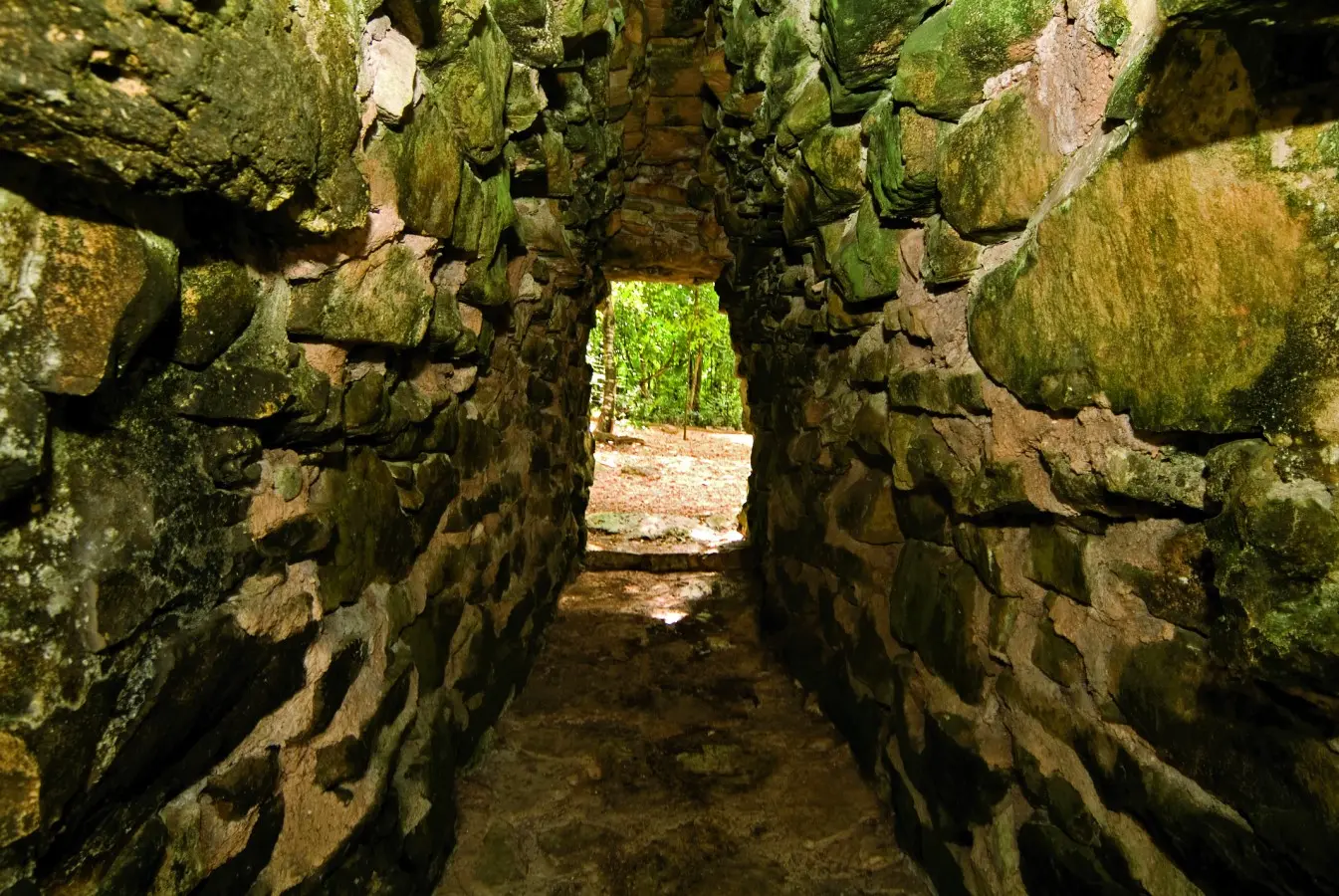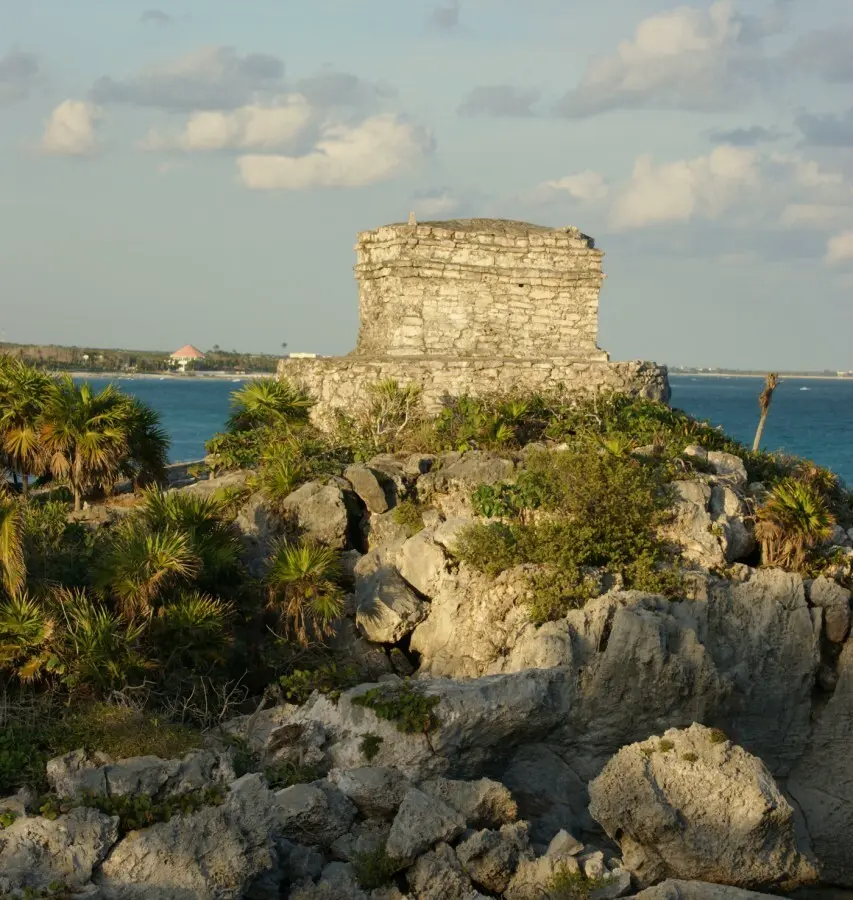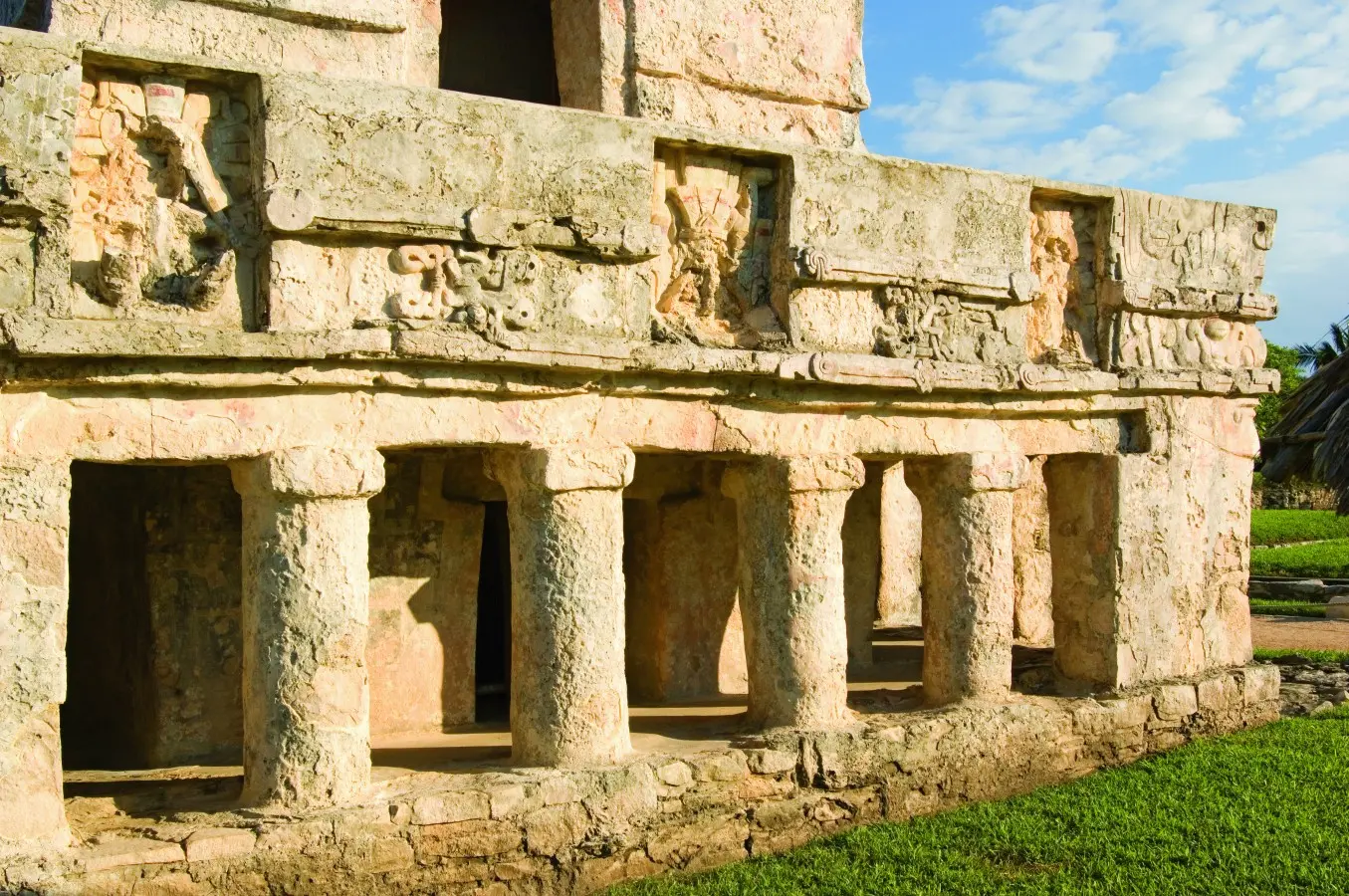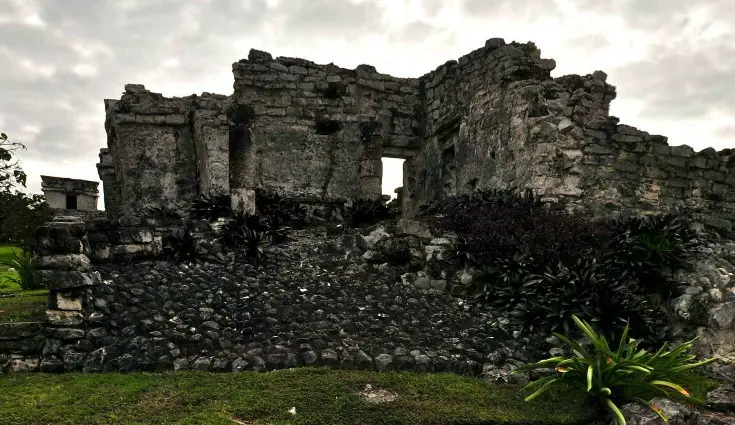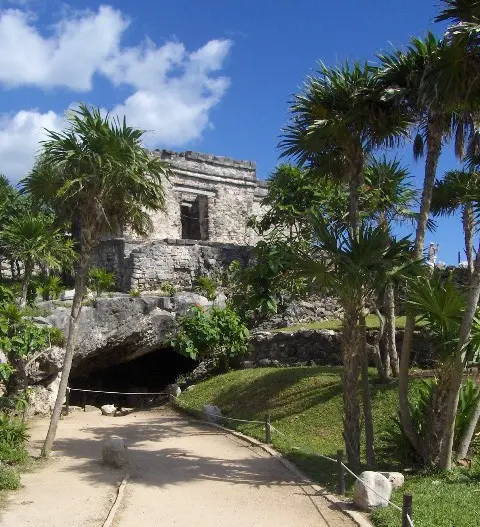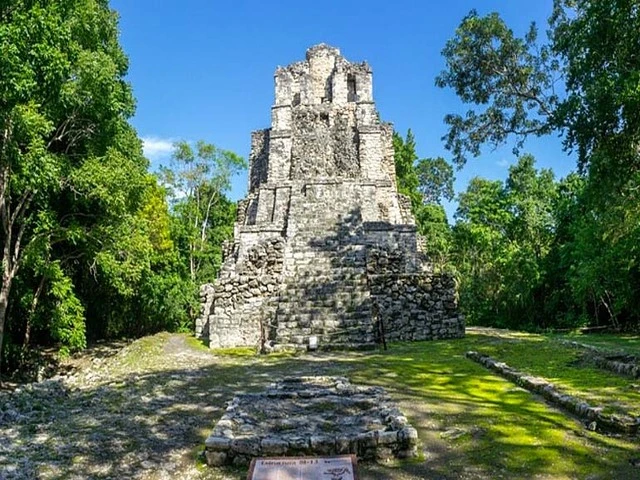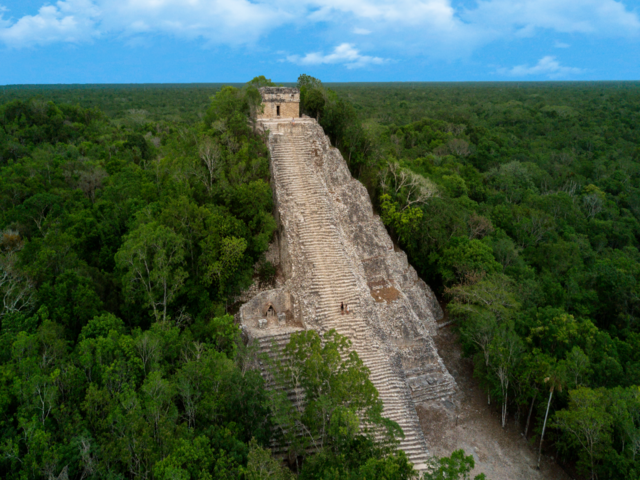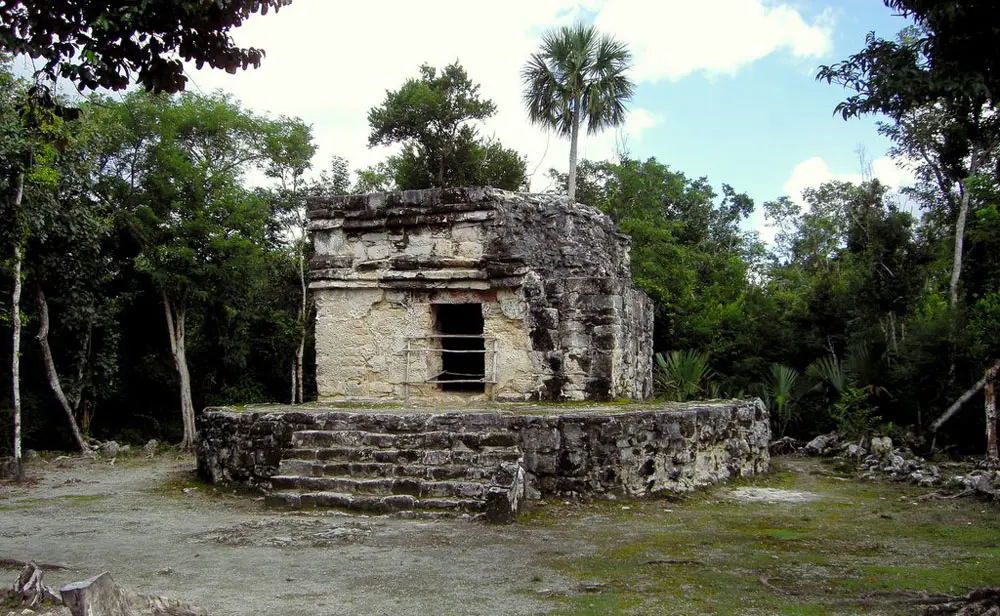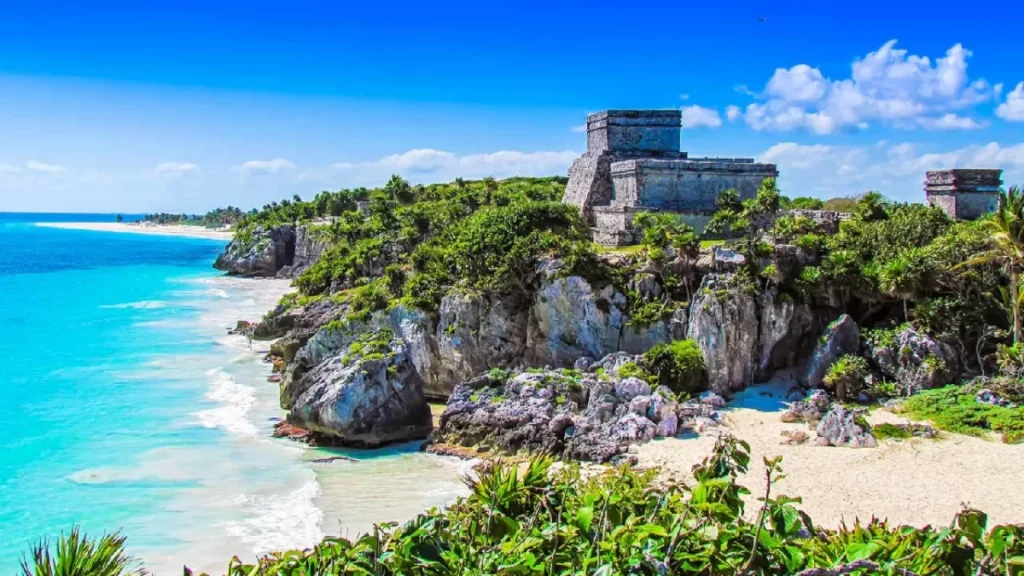
Tulum Archaeological Site
Quintana Roo
Tulum, an iconic archaeological site nestled along the picturesque coast of Quintana Roo, boasts a name that resonates with its historical significance. The term “Tulum” is believed to derive from the Mayan words for “wall,” “fence,” or “palisade,” a fitting descriptor for the imposing perimeter wall that still encloses the monumental complex. This intact wall, along with the well-preserved buildings and intricate mural paintings within, contributes to Tulum’s status as the most representative and famous site on the Quintana Roo coastline.
Despite its relatively recent name, Tulum has ancient roots that stretch back centuries. Archaeological studies have revealed compelling evidence suggesting that Tulum thrived as one of the main Mayan cities during the 13th and 14th centuries. Its strategic coastal location facilitated maritime trade and cultural exchange, while its fortified walls served as a protective barrier against potential threats.
Today, Tulum stands as a testament to the ingenuity and resilience of the ancient Maya civilization. Accessible via the Maya Train, a modern transportation marvel that connects visitors to Mexico’s cultural treasures, Tulum offers an unparalleled opportunity to journey back in time and experience the splendor of the ancient Maya world.
Near Station
Distance Station
2.36 miles (3.8 km)
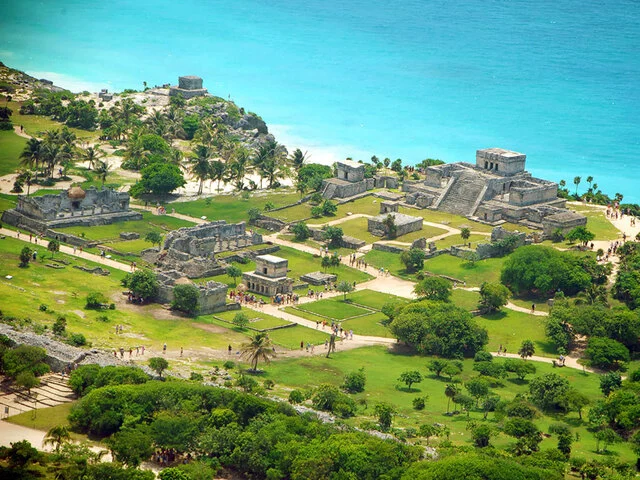
Schedule:
Monday to Sunday from 8:30 am to 17:00. Last entry at 16:00 pm.
Admission:
$95.00 MXN (Mexican Pesos)
Chronology:
564 – 1550 A.D. | Early Classic to Late Postclassic
Peak:
1250 – 1550 B.C. | Postclassic
Where is the Tulum Archaeological Site Located?
It is located south of Cancun, next to the town of Tulum, within the Tulum National Park, at Km 230 of the Chetumal – Cancun federal highway.
Important:
- Fee for professional cameras
- INAPAM discount (for seniors)
- Discount for students and teachers
- Free admission on Sundays (Mexicans)
- Free entry for children under 13 years old
- No smoking, food and pets allowed
The walled city is part of a large pre-Hispanic settlement that also includes the site of Tankah, located 1.8 miles (3 km) to the north.
Structures

